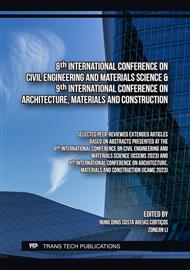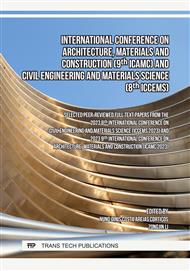p.17
p.27
p.35
p.41
p.47
p.59
p.65
p.79
p.87
Thermal and Natural Light Comfort Analysis of Bouça Social Housing Development in Porto, Portugal
Abstract:
Performative architecture suppose synergy between both functional and formal aspects of architectural design. Considering these aspects as distinct from each other may result in an architectural expression where the functional and technical aspects are merely an afterthought, added in the final stage to comply with regulations and standards. A more comprehensive approach to design considers its performance in all stages of the design process, integrating the technical and aesthetic aspects. This research intends to reassert the role of designers in ensuring the performance of buildings by integrating actively simulation software in the design process. Climate Studio and Rhinoceros 3D were used to analyse the daylight and thermal performance of the case study that supports this research. The architectural field is undergoing a transformation through the growing integration of digital and computational tools, experiencing a shift in the architectural design process. Since the 1970s, computer-based modelling and simulation software have been employed to analyze the performance of buildings. Currently, due to the progress in both hardware and software, simulation tools are extensively available and can be integrated into various stages of the design process. The housing complex of Bouça Residents' Association results from a notable initiative that aimed to offer comfortable and affordable housing to individuals residing in the informal communities known as "ilhas" in Porto. Designed by Álvaro Siza Vieira, the project represents a pivotal moment in the 20th-century Portuguese social housing experiments and stands out as a significant milestone in the history of Portuguese architecture. This study examines various design alternatives, building upon the existing case study, to explore the benefits of integrating modelling and simulation software to evaluate and enhance their performance.
Info:
Periodical:
Pages:
47-57
Citation:
Online since:
January 2024
Authors:
Price:
Сopyright:
© 2024 Trans Tech Publications Ltd. All Rights Reserved
Share:
Citation:



